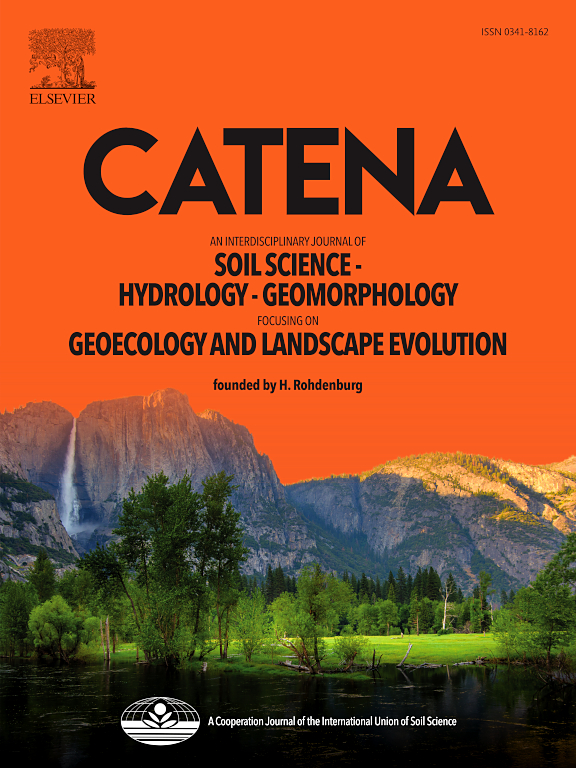Deviation of hydrological regimes caused by blockage of hydrological connectivity: Implications for wetland restoration and management
IF 5.4
1区 农林科学
Q1 GEOSCIENCES, MULTIDISCIPLINARY
引用次数: 0
Abstract
Deviation in hydrological regimes due to blockage of hydrological connectivity affects the wetland ecosystem and creates uncertainty in its interactions, especially in the ungauged wetland. This study investigates the differences in hydrological regimes that exist between isolated wetland patches, explores the impacts of these differences on the wetland ecosystem, and then discusses the implications of these findings for wetland restoration and management in the Jilin Momoge National Nature Reserve. Wetland InSAR was applied to identify hydrological blockage and assess the water level, and the ecosystem resilience was used to reflect the ecosystem states affected by the hydrological regimes. The following results were obtained: (i) although impeded by the low coherence of the radar signal, the water levels as assessed by the wetland InSAR reflected the deviation of the hydrological regimes in isolated wetland patches; (ii) the hydrological connectivity was altered by the rise and fall of the water level accompanied by the changes in hydrological barriers during the water abundance and deficit periods, resulting in the deviation of hydrological regimes; and (iii) the asymmetric trends can be deduced from the ecosystem resilience with an increase in the magnitude of water level fluctuation with a threshold of 0.07, 0.10 and 0.19 m in ErT, ELT and ND wetland patches respectively, indicating that even subtle deviations in hydrological regimes can lead to differences in wetland structure and function between wetland patches and induce uncertainties in wetland integrity. Taken together, these findings suggest that wetland restoration and management should focus on elucidating the hydrological mechanisms underlying wetland habitats using multiple scales (e.g. plot scale and regional scale) from a long-term perspective.
水文连通性受阻导致的水文系统偏差:对湿地恢复和管理的影响
本文章由计算机程序翻译,如有差异,请以英文原文为准。
求助全文
约1分钟内获得全文
求助全文
来源期刊

Catena
环境科学-地球科学综合
CiteScore
10.50
自引率
9.70%
发文量
816
审稿时长
54 days
期刊介绍:
Catena publishes papers describing original field and laboratory investigations and reviews on geoecology and landscape evolution with emphasis on interdisciplinary aspects of soil science, hydrology and geomorphology. It aims to disseminate new knowledge and foster better understanding of the physical environment, of evolutionary sequences that have resulted in past and current landscapes, and of the natural processes that are likely to determine the fate of our terrestrial environment.
Papers within any one of the above topics are welcome provided they are of sufficiently wide interest and relevance.
 求助内容:
求助内容: 应助结果提醒方式:
应助结果提醒方式:


